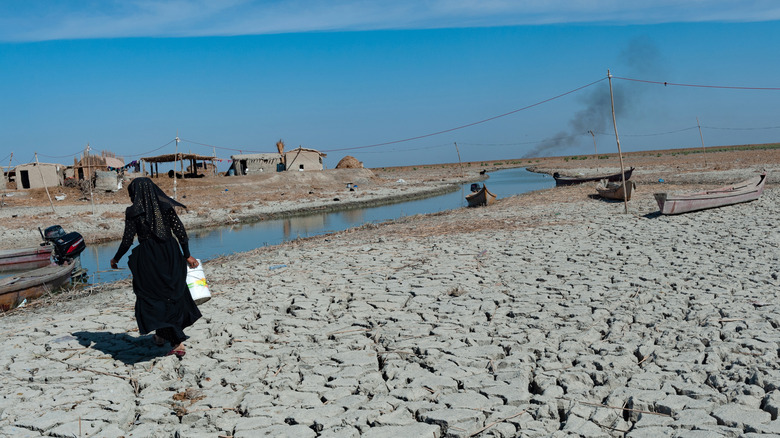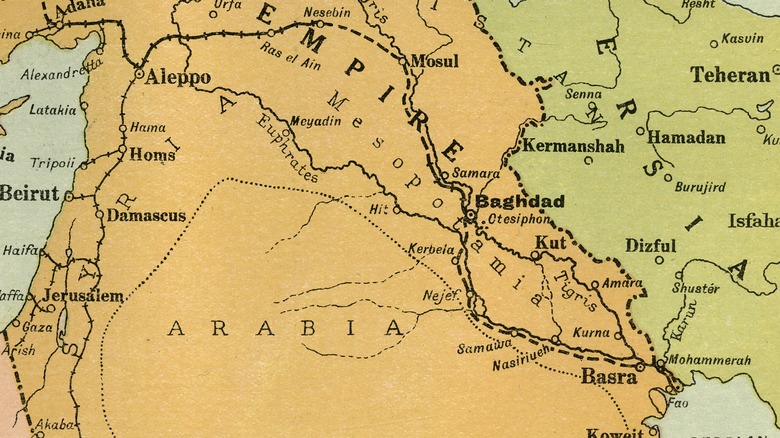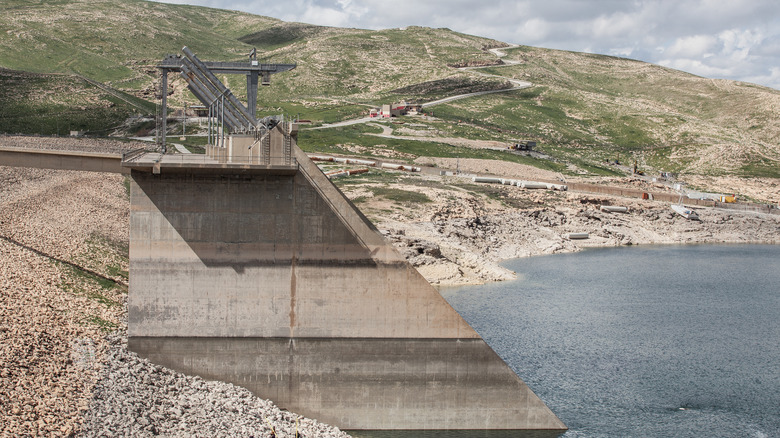Iraq's Climate Crisis Brought An Ancient 3,400-Year-Old City Back To The Surface
Climate change does not only mean global warming. It means changes in weather patterns entirely, whether that means colder, warmer, wetter, or drier. It may not sound significant for any of these weather characteristics to drastically affect any particular location on the planet, but these factors affect so much more than what weather-conscious attire we should be sporting day to day.
In 2020, The New York Times reported that scientists agreed climate change was the culprit behind the horrendous wildfires that relentlessly swept through Australia that same year. Higher temperatures and less rainfall created the perfect conditions for fires to spread across 50 million acres of the country. Droughts may not be the first consequence that comes to mind when thinking about climate change, as most of the focus is often on rising sea levels that are already affecting Venice, Italy, and other coastal cities. However, climate change has been lowering water levels in rivers and lakes all over the world, and it is changing what we are able to see in our landscapes.
Parts of Iraq were once part of Mesopotamia
Think of how many items and people have been lost at sea or have been swept away down a rapid river. With climate change bringing about droughts, these waters are receding to reveal things once lost or never previously discovered at all.
One of the oldest human civilizations in the world emerged between the Tigris and Euphrates rivers in the Middle East, specifically present-day Syria, Iraq, and Kuwait. It is now known as Mesopotamia. According to History, cities began emerging there in 3200 B.C. It was here that Hammurabi, a Babylonian king, wrote the Code of Hammurabi. This was the first set of laws to govern a territory. The area became a hub for literature, weaponry, and architecture.
In May 2022, archaeologists studying in Iraq found remnants from a city believed to be from the Mitanni Empire, which occupied northern Mesopotamia from the 1500s to the 1300s B.C., according to Britannica. The 3,400-year-old city may be Zakhiku, a sprawling city in the empire (per the University of Tübingen).
The city's remnants were found near the Mosul Dam
The archaeologists found the remnants along the Tigris River near the Mosul Dam, which had receded due to the droughts throughout the months prior to their discovery, according to NBC News. The team found fortification walls, palace remnants, and tablets with inscriptions in cuneiform. NBC News also reported that climate change is driving the droughts that unveiled this ancient city.
The Mosul Dam was built in the 1980s. The subsequent changes in water flow after it was built put the city underwater until March 2022. The archaeology team did not have much time to conduct research, as the water levels rose again three months later.
Droughts have revealed secrets of the past all over the globe. Lack of rainfall left the Po River in Italy dry enough to see a German tank from World War II. Previously sunken boats have turned up in Lake Mead as the lake's levels drop as well. A ghost village in Spain reappeared after a drought dried up parts of a reservoir. While these discoveries are intriguing, droughts are catastrophic for living things from plants to animals. Scientists predict that these will continue in the future (per Bloomberg).


